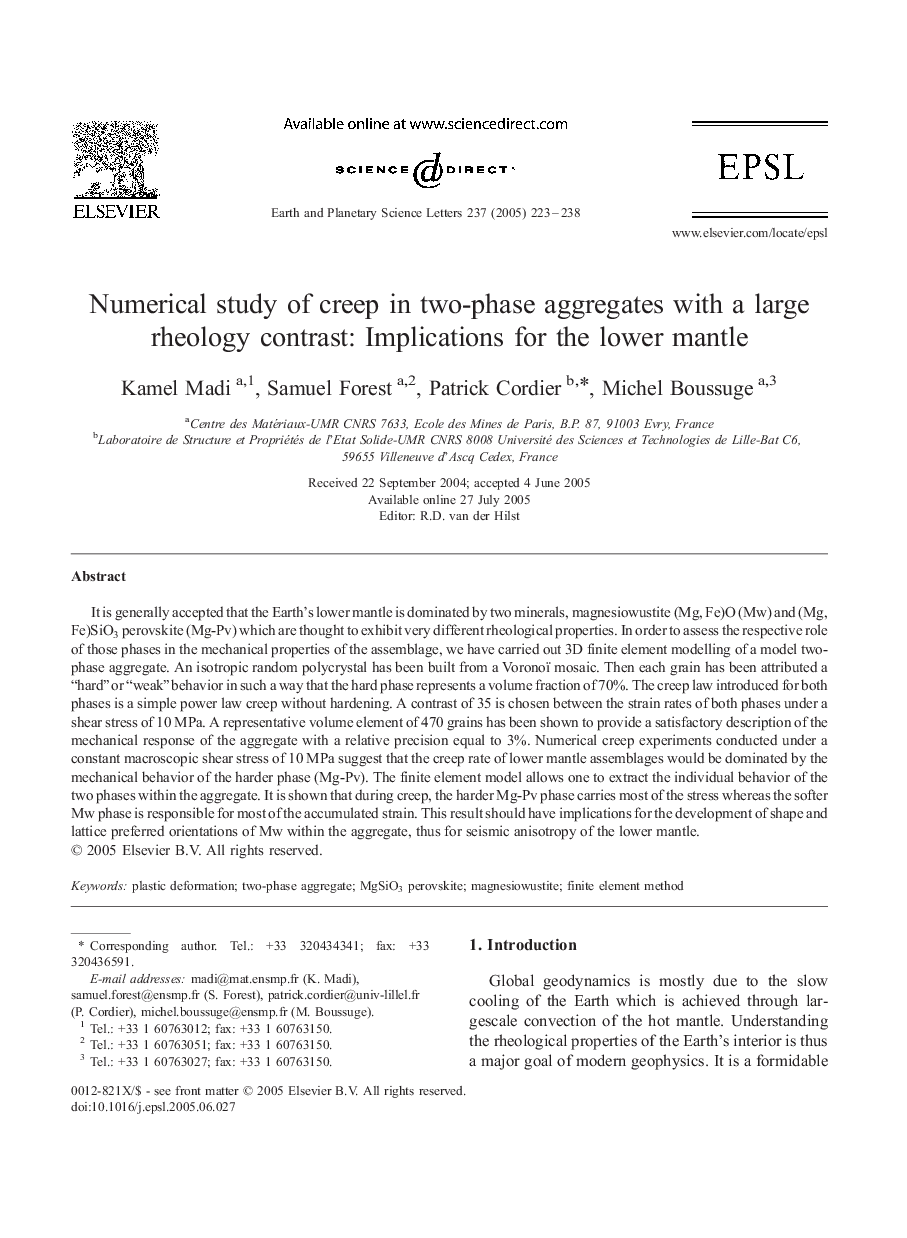| Article ID | Journal | Published Year | Pages | File Type |
|---|---|---|---|---|
| 9522120 | Earth and Planetary Science Letters | 2005 | 16 Pages |
Abstract
It is generally accepted that the Earth's lower mantle is dominated by two minerals, magnesiowustite (Mg, Fe)O (Mw) and (Mg, Fe)SiO3 perovskite (Mg-Pv) which are thought to exhibit very different rheological properties. In order to assess the respective role of those phases in the mechanical properties of the assemblage, we have carried out 3D finite element modelling of a model two-phase aggregate. An isotropic random polycrystal has been built from a Voronoï mosaic. Then each grain has been attributed a “hard” or “weak” behavior in such a way that the hard phase represents a volume fraction of 70%. The creep law introduced for both phases is a simple power law creep without hardening. A contrast of 35 is chosen between the strain rates of both phases under a shear stress of 10 MPa. A representative volume element of 470 grains has been shown to provide a satisfactory description of the mechanical response of the aggregate with a relative precision equal to 3%. Numerical creep experiments conducted under a constant macroscopic shear stress of 10 MPa suggest that the creep rate of lower mantle assemblages would be dominated by the mechanical behavior of the harder phase (Mg-Pv). The finite element model allows one to extract the individual behavior of the two phases within the aggregate. It is shown that during creep, the harder Mg-Pv phase carries most of the stress whereas the softer Mw phase is responsible for most of the accumulated strain. This result should have implications for the development of shape and lattice preferred orientations of Mw within the aggregate, thus for seismic anisotropy of the lower mantle.
Related Topics
Physical Sciences and Engineering
Earth and Planetary Sciences
Earth and Planetary Sciences (General)
Authors
Kamel Madi, Samuel Forest, Patrick Cordier, Michel Boussuge,
